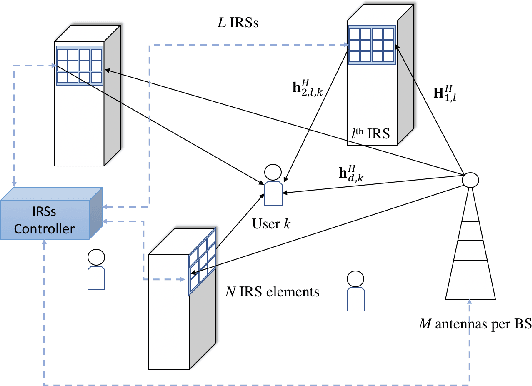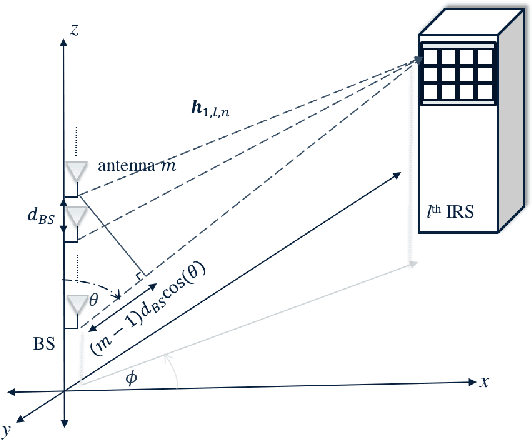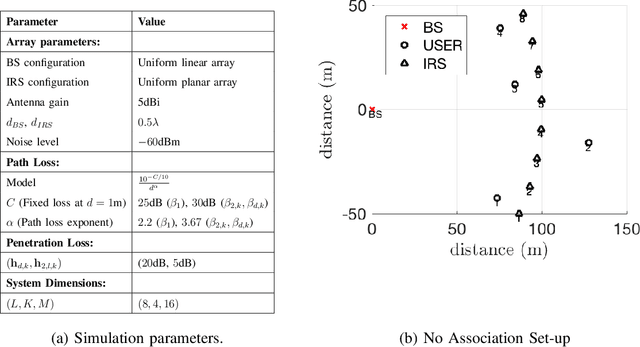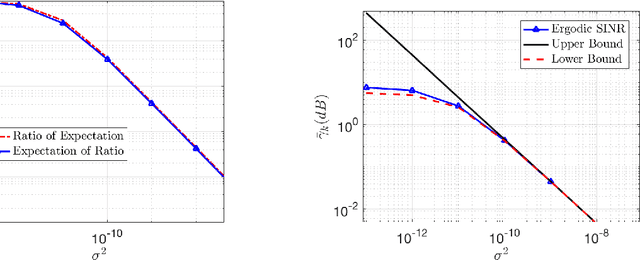Hibatallah Alwazani
Delay-Augmented Stacked Intelligent Surfaces: Potential, Challenges, and Opportunities
Oct 01, 2025Abstract:Stacked intelligent surfaces (SIS)s have been proposed recently as an enabling technology for Holographic Multiple Input Multiple Output (HMIMO) and Ultra-massive MIMO (umMIMO) technologies. Their utility can extend beyond spatial wave-domain processing of signals if they are enhanced with strategically-tuned symbol-duration level delays to enable temporal processing as well. In this work, we introduce the idea of a delay-augmented SIS (DA-SIS). We shed light on the feasibility of realizing delay units in an SIS. Then, we discuss the relevance of the proposed DA-SIS and present a use case that illustrates its potential, wherein the DA-SIS serves as an analog equalizer that aids in eliminating multi-path-induced inter-symbol-interference (ISI). We show how the number of elements affect the equalization process using the bit error rate (BER) as a metric, and demonstrate the potential of the DA-SIS in equalization via comparing with digital equalizers as a benchmark. Finally, we present opportunities and future research directions that can be undertaken to bring this idea to fruition.
Enhancing Secret Key Generation in Block Fading Channels using Reconfigurable Intelligent Surfaces
Aug 09, 2023Abstract:Physical layer security (PLS) is superior to classical cryptography techniques due to its notion of perfect secrecy and independence to an eavesdropper's computational power. One form of PLS arises when Alice and Bob (the legitimate users) exchange signals to extract a common key from the random common channels. The drawback of extracting keys from wireless channels is the ample dependence on the dynamicity and fluctuations of the radio channel. However, some radio channels are constant such as line of sight (LoS) and can be estimated by Eve (an illegitimate user), or can be quite static in behaviour due to the presence low-mobility users thus restricting the amount of randomness. This in turn lowers the secret key rate (SKR) defined as the number of bits of key generated per channel use. In this work, we aim to address this challenge by using a reconfigurable intelligent surface (RIS) to produce random phases at certain carefully curated intervals such that it disrupts the channel in low entropy environments. We propose an RIS assisted key generation method, study its performance, and compare with benchmarks to observe the benefit of using an RIS while considering various important metrics such as key mismatch rate and average secret key throughput. Simulations are made to validate our theoretical findings showing an improvement in performance when an RIS is deployed.
Performance Analysis under IRS-User Association for Distributed IRSs Assisted MISO Systems
Nov 03, 2021



Abstract:Distributed intelligent reflecting surfaces (IRSs) deployed in multi-user wireless communication systems promise improved system performance. However, the signal-to-interference-plus-noise ratio (SINR) analysis and IRSs optimization in such a system become challenging, due to the large number of involved parameters. The system optimization can be simplified if users are associated with IRSs, which in turn focus on serving the associated users. We provide a practical theoretical framework for the average SINR analysis of a distributed IRSs-assisted multi-user MISO system, where IRSs are optimized to serve their associated users. In particular, we derive the average SINR expression under maximum ratio transmission (MRT) precoding at the BS and optimized reflect beamforming configurations at the IRSs. A successive refinement (SR) method is then outlined to optimize the IRS-user association parameters for the formulated max-min SINR problem which motivates user-fairness. Simulations validate the average SINR analysis while confirming the superiority of a distributed IRSs system over a centralized IRS system as well as the gains with optimized IRS-user association as compared to random association.
 Add to Chrome
Add to Chrome Add to Firefox
Add to Firefox Add to Edge
Add to Edge